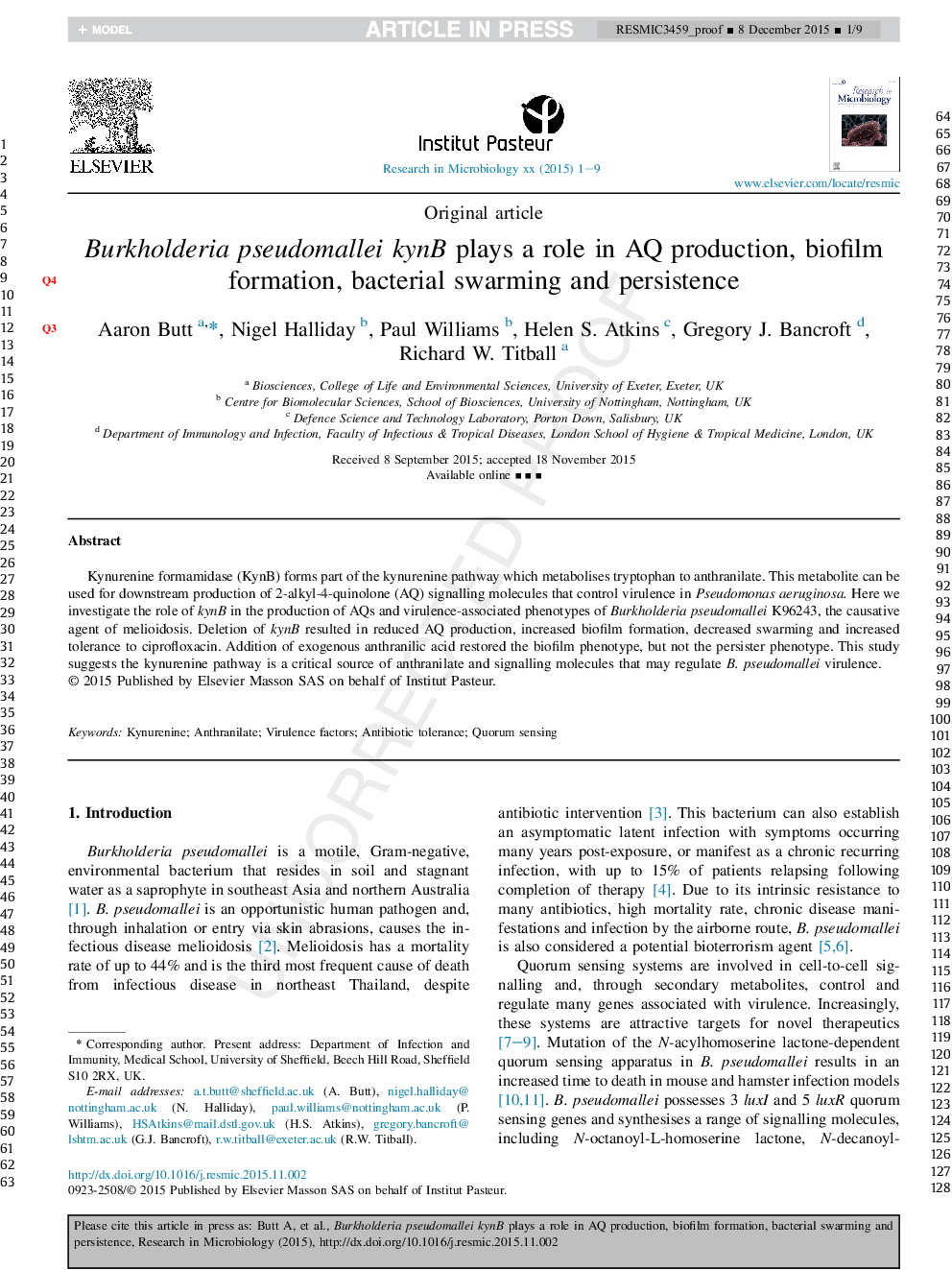| Article ID | Journal | Published Year | Pages | File Type |
|---|---|---|---|---|
| 6288044 | Research in Microbiology | 2016 | 9 Pages |
Abstract
Kynurenine formamidase (KynB) forms part of the kynurenine pathway which metabolises tryptophan to anthranilate. This metabolite can be used for downstream production of 2-alkyl-4-quinolone (AQ) signalling molecules that control virulence in Pseudomonas aeruginosa. Here we investigate the role of kynB in the production of AQs and virulence-associated phenotypes of Burkholderia pseudomallei K96243, the causative agent of melioidosis. Deletion of kynB resulted in reduced AQ production, increased biofilm formation, decreased swarming and increased tolerance to ciprofloxacin. Addition of exogenous anthranilic acid restored the biofilm phenotype, but not the persister phenotype. This study suggests the kynurenine pathway is a critical source of anthranilate and signalling molecules that may regulate B. pseudomallei virulence.
Related Topics
Life Sciences
Immunology and Microbiology
Applied Microbiology and Biotechnology
Authors
Aaron Butt, Nigel Halliday, Paul Williams, Helen S. Atkins, Gregory J. Bancroft, Richard W. Titball,
